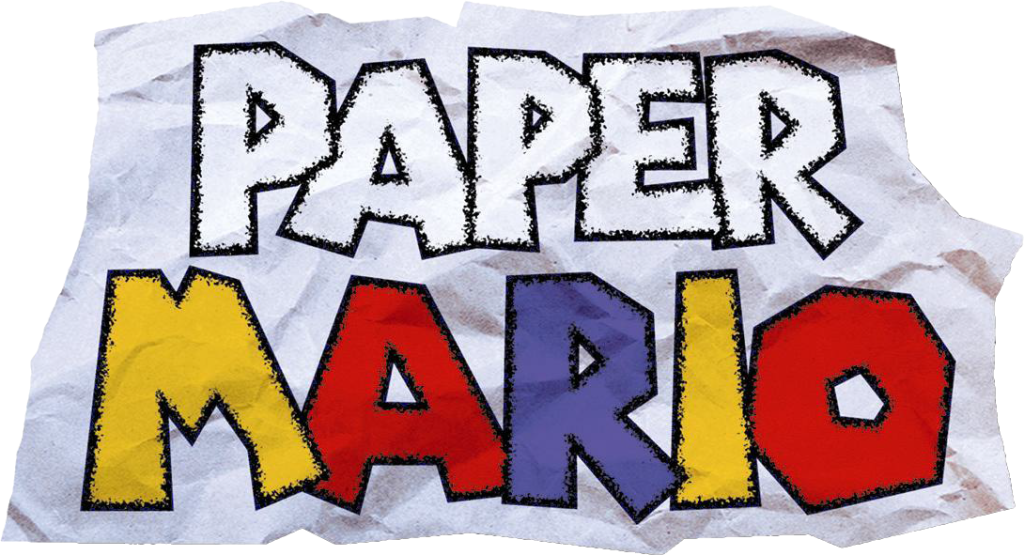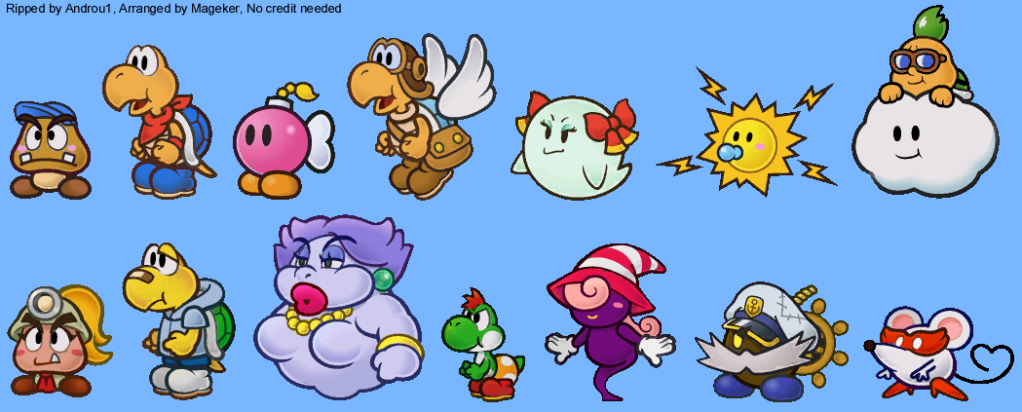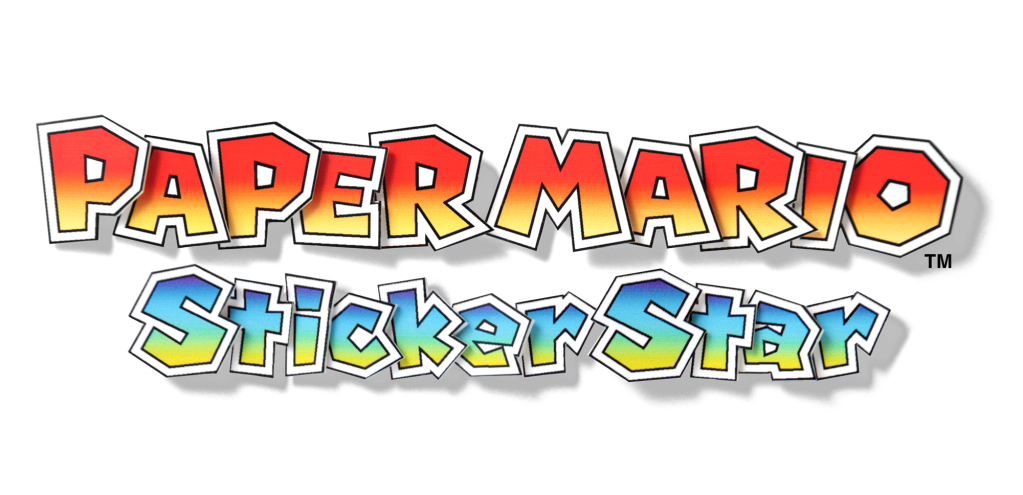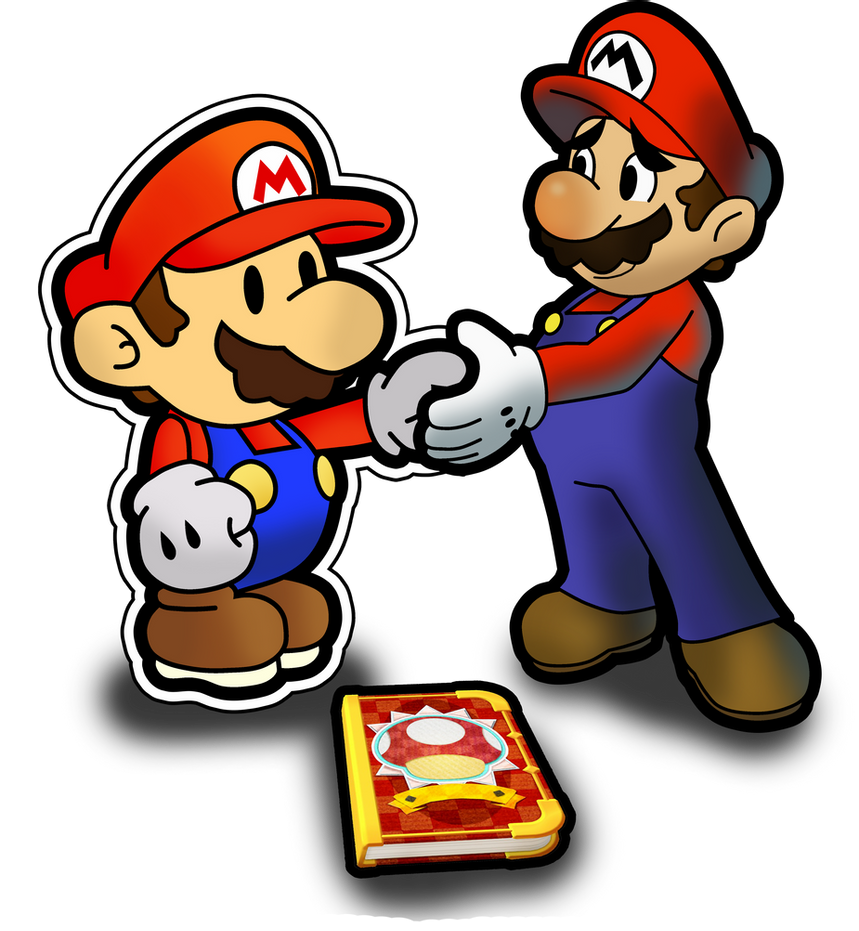
The Paper Mario series has been a unique trek in establishing new roots while promoting older sources, with the famed mustached plumber’s adventures in a 2D scope world. Since its release in the 2000s, the game’s received praises for unique takes on the Mario series through the scope of adventures in a paper-thin universe. It reintroduced Mario to the world for younger viewers, and older viewers saw his newest experiences as a continuation of his adventurous exploits from previous titles.
The original game was well-received by fans on the Nintendo 64 console back in 2000 for Japanese audiences and 2001 for North American audiences. It was a light-hearted, fun, and reactive combat RPG for children of all ages. It’s success promoted a second installment for the series, The Thousand-Year Door (TTYD), which acclaims as the best installment in the series. Furthermore, it’s the one that fans have remembered, cherished, and have hoped would continue to be the traditional formula for Paper Mario games in the future. Despite this, the series has gone through several changes and has left fans questioning its progressive development.
Since its second installment, the series has always presented a unique take to the word “paper” for the Paper Mario series. Through the incorporation of particular abilities that Mario gained through his travels, it allowed him to solve puzzles and traverse the world, which brought a new dynamic element to the games. This mechanic progressively became a selling point for future titles in the series, with its fundamental mechanics tied to a specific innovation, paper or otherwise. While the games released were seen as useful additions to the Paper Mario series and were welcomed despite older fans criticisms of its new direction in game design, the games paper mechanics’ core principle continues to be implemented within each installment. At the time of writing this article, Paper Mario: The Origami King has been well received by gamers since its release on July 17, 2020, and has currently sold 555K digital units since July.
Paper Mario: The Origami King sold 555K digital units in July. While its performance was nowhere near those of the last big Switch exclusives, Animal Crossing: New Horizons (5.0M) and Pokémon Sword and Shield (2.7M), the game did better than Fire Emblem: Three Houses when it launched in July 2019.
Source: Superdata
The games complement visual prowess with colorful graphics, awe-inspired papercraft designs, excellent soundtrack, and creative takes on turn-based battles. In addition to cementing the mechanics and ambiance of Paper Mario, it has showcases different systems as a core principle for its game design and game development.
Throughout this article, points of interest in the Paper Mario games bring attention to new developments and new perspectives explored throughout the series. These referenced points showcase change for each title in the Paper Mario franchise and its progression from past to present. It will detail how it has achieved new structures from its original release back in 2000 towards its latest title in 2020. By the end of this article, a summary of where the Paper Mario games will lead and how its future titles will gain traction with old and new gamers’ generations shall unfold.
- The Expansion of Characters (Enemies and NPC’s), Mechanics, and Story
A growing staple found in most Mario games is the increasing roster of characters that Mario meets, whether it’s friend or foe. The Paper Mario games are no exception to this rule. They have transitioned countless characters from Mario’s famous adventures within the Mushroom Kingdom; primarily, notable enemies and species from his most famous outings. The games also established other known species like the Toads, Goombas, Koopas, Boos, etc., and fleshed their lives out in a way that was befitting of an RPG. This exploration of the different species would cement a more robust narrative that fans would enjoy playing other Mario titles.
If not the most important, one of the essential factors lies in the foundation of its mechanics. Each game illustrates something new that’s added to the world of Paper Mario, whether its from the paper dimensions or the level of meta within Mario’s paper world. The narrative design in the stories for each game is equally important. Nintendo continues to make a convincing story that appeals for kids; however, underneath the surface, it can also be relatable to adults; after all, E for Everyone doesn’t mean it’s only for kids sometimes.

Paper Mario (Nintendo 64)
Characters/Enemies: The first Paper Mario supplied 233 enemies for Mario to battle throughout the story and allowed him to fight four additional enemies as optional side bosses making 237 enemies. The game also promotes multiple species as allies to Mario, aside from the essential trio of Goombas, Koopas, and Bomb-Ombs, even giving them a bit of history in terms of how their names come to be. Other characters will share the same development of mixing their species name, or the animal they’re based on, to create their name while showcasing various Mushroom Kingdom species’ culture.
The dichotomy of Mario’s enemies and allies introduced gives substance to their species within the RPG setting. Toads weren’t just citizens but also salesmen, soldiers, and martial artists, proving that the species wasn’t incapable of defending themselves, or their sovereign, and that they have merits in protecting the Mushroom Kingdom; which, at the time, seemed to be solely the responsibility of Mario and Luigi. Enemies like the Goombas and Koopas showcase that they are unwilling participants in assisting Bowser’s army, provoking the idea that Bowser’s anarchy on the Mushroom Kingdom through fear and power might have been the reason for Mario’s rogues’ gallery.
While Paper Mario isn’t the first game to establish this relationship between Mario and the residents living within, around, and above the Mushroom Kingdom, it paints the picture differently compared to earlier games in the franchise. It establishes growth, understanding, and develops the characters found within Mario games. The idea that Parakoopas are excellent at delivering mail, Goombas are inherently peaceful unless threatened, or that Boos pride themselves in scaring people was a notable first in the series. That Bumpties are a different kind of penguin than actual penguins, Shy Guys are mischievous collaborators with different shapes and sizes, Bob-Ombs are gendered, Sparkies are sentient, and that Toads are resourceful was also a surprise. This momentous decision helped shape worldbuilding and character development for future Mario titles in the future.
Mechanics: The Partner System was the first support system for the titled game in the series. Each partner could be related, in a pseudo sense, to HM’s from the Pokémon series; subsequently, they were incredibly important to the progression of the game. The characters that joined Mario’s adventure adds to the expanding world that Mario explored, influencing the story with their connections to the locales.
The Perspective of Story: The original game’s most refreshing take towards a narrative design comes from a storybook. Memorable titles like Super Mario World 2: Yoshi’s Island was known for its storybook progression sequences, and Paper Mario’s story delivers lines that take it from beginning to end. The start of Mario’s journey, successes, downfalls, and the final battle are all accounted for, like a bedtime story for the player.

Paper Mario TTYD (The Thousand Year Door)
Characters/Enemies: The second installment within the series cuts its roster down to 124 enemies, but introduces new species like Caws, Ratooeys, Bristles, Nibbles, Twilighters, and subspecies of Humans (Flavio, Wonkie, Merlon, etc.); furthermore, reintroducing other known species like Swoopers, Squeeks, Piantas (Mario Sunshine), Doogans, and the return of Duplighosts from the first game.
The characters found within TTYD could be considered one of the most relatable characters written from a Mario game. Unlike the fairytale-inspired locals that the Mushroom Kingdom usually showcase, the game’s enemies and NPCs are linked by the troubles in their environment. Rogueport could be considered the ghettos of the Mushroom Kingdom, showcasing the slums and how corruption by turf wars, crime, and the destruction of the ‘former town’ becoming known as the Rogueport Sewers. Almost every town/locale showcases a different threat that affects the townsfolk, which, in turn, is represented by the threat that Mario has to help them conquer.
- Petalburg: Fear and Endangerment.
Threat: Hooktail’s attacks promotes fear, lack of confidence, and anxiety for the villagers; furthermore, in addition to his father’s disappearance, this affects Koops’ anxiety. - The Great Tree: Harassment, War, and Survival
Threat: Jabbies (Natural Born Enemies) and X-Nauts threatening their way of life; furthermore, this prompts Punio to stand against their oppressors and rallies his fellow Punies to fight. - Glitzville: Greed, Gluttony (Power), and Confinement
Threat: Grubba’s binding contract forces the Glitz Pit fighters to continuously keep fighting, while isolating them from leaving Glitzville (Mario); furthermore, Grubba entraps potential stars for his own machinations. - Twilight Town: Bullying
Threat: Doopliss’s schemes of turning the innocent Twilighters into pigs, and shaming Mario as he tries to get his body back; taunting/threatening him outside of town, and every time he leaves or approaches it. - Keelhaul Key: Betrayal and Isolation
Threat: Cortez and, to an extent, Lord Crump’s involvement; Cortez’s betrayal and the deceitful actions of Flavio’s ancestors, and Lord Crump’s involvement with the crew before revealing his betrayal. - Excess Express: Trust and Deception
Threat: Doopliss’s deception as Zip Toad, Heff T.’s deception of Chef Simi’s stew, Ghost T.’s trust in Mario (which could also be deceptive), and Pennington’s trust as a detective and as the sanctum holder for the Crystal Star in Poshley Heights. - Fahr Outpost: PTSD (Post Traumatic Stress Disorder)
Threat: No notable threat causes this in game, however, the Bob-ombs in various titles are always involved with battle or war in some way (Bobby the Bob-omb, Bombette was a prisoner (Prisoner of war)), like how General White was apart of something akin to the Cold War.
In addition to the town’s circumstances, The Trouble Center expands on characters Mario meets on his adventures and fleshes their stories out. Issues of losing a loved one, mid-life crises, bioterrorism, etc. are just a few examples of how the game tackles serious matters; furthermore, it’s optional to be experienced or wholly forgotten by the whim of the player.

Mechanics: The Partner System continues in the next installment; however, the first paper mechanic introduced via an interesting “curse” that’s linked to the lore of the story. The game utilizes the idea of being paper-thin with advantages. Mario’s abilities with turning into paper airplanes, paper boats, rolled/tubed papers, and being paper-thin, was a creative execution of the title character’s abilities, figuratively and physically speaking, ironically.
The Perspective of Story: TTYD takes from the perspective of a story, a common point in all of the games, and inadvertently makes the game feel like a pop-up book. Every location that Mario travels towards to find the Crystal Stars, a new site is revealed in a way similar to a pop-up book; however, only when it’s necessary. Switch blocks push the initiative to reveal different paths, uncover secrets, and change the landscape in many other areas that Mario visits within the game and promotes the idea that this storybook has additional features.

Super Paper Mario
Characters/Enemies: The third installment in the series provides 200 enemies for battle; however, the complete cast of characters included within this game bumps the total to 234 characters. The enemies that return for this installment are the stapled types from many of Mario’s games (Goombas, Koopas, Pokeys, etc.) with the inclusion/debut of a couple of enemies absent from previous Mario games that couldn’t be fought (Thwomps, Tromps, and Cheep Cheeps).
Super Paper Mario’s take on characters was uniquely executed to imitate the mechanics available for the game. Instead of being one dimensional, a joke in the sense that their from a paper-verse, the game prides itself in showing two layers of complexity for the characters. The game showcases “light” and “dark” personalities through the interdimensional citizens known as Flip-Flop Folk. Flipside represents the light side of things, while Flopside represents the opposite with the dark.
Mechanics: There were two systems implemented for this game that continued the previous system mechanics from TTYD. The first system, The Flip System, allows Mario to transcend his 2D plane perspective and transcends into a 3D plane perspective for a limited time. The addition of the Pixls, additional partners that assist Mario with his main partners (Bowser, Peach, and Luigi), allows access to previous partners and paper moves. With additions in being more of an RPG-platformer, this system made the new battles fun and provided additional gameplay options.
The Perspective of Story: The Pixls stories have a heavy concentration on the concept of life. Amongst “other characters,” the game presents a unique take for the NPCs living in that world, impacting the story with a conservative take on life and how it can be easily lost. This concept, considered to be very dark at the time of its release, plays with the trope of good and evil and subverts the expectation of light and dark affiliate forces within a Mario game; such as the rivalry between Bowser and Mario, Bowser and Peach’s complexities, and Luigi’s inferiority complex.

Paper Mario: Sticker Star
Characters/Enemies: The fourth installment in the series drastically cuts their enemies down to 83, concentrating their efforts more on the gameplay with the use of Stickers and Paperization techniques. Stapled enemies in the franchise would continue to appear; however, based on Shigeru Miyamoto’s decision to use species from only Super Mario, this increased the catalog of returning Mario enemies. This change included the debuts of Snifts, Ninjis, Scuttlebugs, Scaredy Rats, Spinning Snowmen, Rocky Wrenches, Broozers, and Whomps.
Aside from wanting us to change the atmosphere a lot, there were two main things that Miyamoto-san said from the start of the project—”It’s fine without a story, so do we really need one?” and “As much as possible, complete it with only characters from the Super Mario world.
Kensuke Tanabe’s response to “two main things” informed to him by Shigeru Miyamoto for Paper Mario: Sticker Star’s development.
Source: Iwata Asks
The focus on characters was not as strong as previous installments; however, a specific character does get a bit more shine than others as a pivotal point with in-game mechanics, plot, and being the “voice” for Mario at times.
Mechanics: A system overhaul was requested for this game, allowing the paper techniques to be used more frequently and within battles. This idea was made way by the Sticker System, introducing stickers’ concepts within the paper world. Its mechanics were similar to some Mario and Luigi games with the Bros. Attacks; however, unlike M&L’s techniques, the stickers were collectible attacks and not progressively learned abilities.
The Perspective of Story: The story went back to its roots of generalized Super Mario games with Bowser as its antagonist and Princess Peach as the damsel in distress. Its perspective was still an open storybook; however, it would be negligent if it wasn’t a sticker book with storytelling elements within it. In addition to introducing “Things,” the tongue and cheek of fully realized objects in Paper Mario’s world present humorous results in and out of battle.

Paper Mario: Color Splash
Characters/Enemies: The fifth installment lowers its roster of enemies to 73; however, including different variations and unique takes on enemies, totals the enemy roster to 88. Newly introduced enemies include Bone Goombas, original concept Lava Bubbles, Ptooies, and Dhino Rhinos’ debut within the series.
The introduction of Huey, Mario’s partner for the game, was a well-rounded addition in the catalog of partners that Mario has had throughout the Paper Mario series. His positive attitude, courageous sacrifices, and Mario’s relationship would be fondly received by fans, old and new. This development of a “partner” made the story of Color Splash an enduring tale; however, the combat’s prowess for older fans did not appeal to them as much as the story would for others.
Mechanics: The Sticker System from Sticker Star was revamped into the Battle Card System for Color Splash. Additional tweaks to the system provided a new, yet familiar, overlay of battle within the game; including the added objective of paining the environments and enemies.
The Perspective of Story: In ways similar to the second game, Color Splash introduces the concept of a mystery and how it can be solved alongside Huey throughout the game. As it progresses, the storybook motive is ongoing; however, the idea that Mario’s adventure is now in a paint book would be tolerable from the paper mechanic focal point.

Paper Mario: The Origami King
Characters/Enemies: The fifth and recent installment boasts a roster of 61 enemies, which is currently the lowest count of enemies in a Paper Mario title. What they sacrificed in numbers, they made up for in new additional species. The appearance of Galoombas, Sidesteppers, Crowbers, Nipper Plants, Chargin’ Chucks, Stingbies, Sumo Bros, and Mechakoopas are welcomed additions to the series.
The introduction of Olivia creates an origin to the Origami King. Though not unique in design, the addition of partners makes its return with partners like Bobby the Bob-omb, Kamek, Professor Toad, and others.
Mechanics: The newest mechanic introduced in The Origami King is a unique take on “turn-based battle systems” that allow for diverse strategies in formatted battles. Weapons return in a system similar to TTYD, where they can be upgraded; however, accessories and artillery can be bought from shops as a first in the series. The origami aspects outside of battle are highlighted with the use of Magic Circles and the 1,000-Fold Arms.
The Perspective of Story: A giant origami project would be the best explanation for the game’s perspective. The game’s use of paper perspectives, highlighted in various ways throughout the game, makes the world feel grand in size rather than linear in its design.
- Where is the series heading? Will it ever be the same as the first or second games?
The Paper Mario series’s future has been questioned ever since the concept of Sticker Star was presented to fans back in 2012. While different, Nintendo’s direction with the games was not without merit in regard to the continued success of the series. Additional restrictions by Shigeru Miyamoto, Nintendo’s guidelines in the use of Mario, and the targeted audiences for those games have continued to be a private and public debate regarding the direction of the series. The first generation of fans that grew up with the series remembers what made Paper Mario so memorable for them. Whether it was the concept of partners, the 2D paper-verse that Mario travels, the whimsical soundtrack, or just the fact that it was a new Mario game, those fans were excited to play the game, seeing where Mario’s next, big adventure.
“The game development philosophy I’ve adopted from Mr. Miyamoto is developing innovative and unique gameplay systems. I’m not opposed to the fans’ opinions. However, I view my game development philosophy as separate from that. If we used the same gameplay system wanted by the fans again and again, we wouldn’t be able to surprise them or deliver new gameplay experiences. We always try our best to exceed expectations in surprising ways. At the same time, there’s no guarantee that we’ll always succeed in doing that – so it’s a real challenge.”
Producer Kensuke Tanabe’s response on the development of new Paper Mario games.
Source: NintendoEverything
Applying the same logic that fans love Mario games and are excited to play them is to be noted; however, the reality that Paper Mario is changing should not be ignored. Kensuke Tanabe’s response in developing “innovative and unique gameplay systems” is a statement that continues to hold for all the Paper Mario games he’s worked upon in succession with others. He knows about the core principles that fans loved in TTYD, and he’s worked on every game involving Paper Mario as a producer to implore new ideas for the series creatively.
“Mr. Tanabe is correct about us having complete creative control over the crucial elements of the game. We were constantly checking whether or not our approach was moving too far away from the Mario universe. During development, we were also careful not to disappoint the expectations of fans of the core Mario series. As mentioned, there are strict guidelines related to the use of characters. It’s a challenge to emphasize the unique aspects of the game while still adhering to the guidelines.”
Director Masahiko Nagaya follow-up in regards to Tanabe’s statement on “creative control” in regards to Paper Mario games.
Source: NintendoEverything
In my opinion, I feel that the series hasn’t lost its edge or has gone down the wrong path. As I continue to grow as a narrative designer, hoping to create a video game series of my own one day, the backlash of writer’s block, creative slowdowns, or the lack of inspiration, impedes every project I create. Good ideas will be altered heavily, and perfect ideas will be seriously flawed when revisited later. The concept of creating innovations is crucial to the continuing success of any idea. Whether it’s in advertising food, publishing new stories, designing new fashions, and creating video games.

The continued success of Paper Mario depends on the fans, young or old. After the release of The Origami King, details on the production of Paper Mario games have been made aware to the public. It shows that the team behind the games wants the fans to trust that they will get it right, and even if it’s wrong, they’ll continue to create great additions for the series. Nintendo’s famous franchises have had their fair share of unique games from Yoshi’s unique adventures with crafts, or as crafts material, Kirby’s adventures with yarn and paint, Pokémon’s otherworld adventures (Mystery Dungeons, Pokémon Conquest, Detective Pikachu, etc.), Link’s multiple timeline adventures, and so many more.
In the end, Paper Mario will continue to be a prominent series that Nintendo works hard to achieve. Whether it’s an RPG like the first two games or plays around with the concept of paper from the last three games, Nintendo’s development team will continue to make the games relatable to the fans, whether it’s paper-thin or folded over.